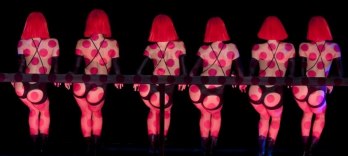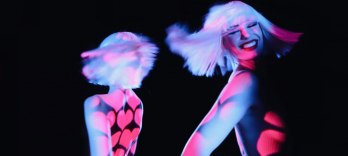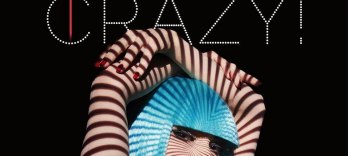The Rake's Progress
Mo | Tu | We | Th | Fr | Sa | Su |
First part
Act 1:
Scene 1
Idyllic springtime. Anne Trulove and her fiancé Tom Rakewell sing of love and their trust in destiny. Trulove, Anne’s father, offers Tom a position as a clerk which the latter refuses in disgust. He believes in his chance and thinks that man cannot influence his destiny. Thereupon appears a stranger – Nick Shadow – who announces to Tom and the Truloves that the young man has been left a fortune by an extremely wealthy uncle. The two men leave for London in order to settle the estate as quickly as possible. All take their leave in an ambiguously joyful atmosphere.
Scene 2
Mother Goose’s brothel in London. Prostitutes and “roaring boys” sing and drink to Venus and Mars. Nick and Tom are present, and the former puts the latter through his ultimate test before embarking on a new life : to do his duty to himself, pursuing nature, beauty and pleasure. As regards love, Tom, unable to define it, seeks to avoid the question. However, Nick shows him that a life of hedonism can halt the progress of time. Tom sings the praises of that purest of loves that we are forever betraying, before throwing himself into the arms of Mother Goose, the very incarnation of lust.
Scene 3
With no news of Tom, Anne is worried and has a foreboding that he has forgotten his promises and his love. Notwithstanding the affection she feels for her father, she decides to leave him and seek out Tom, who seems so weak to her eyes.
Second part
Act 2
Scene 1
Awaking after a night of orgy, Tom reflects sadly on his new life, his inner emptiness and the excesses of the city : “I wish I were happy”, he sighs. Nick appears and advises him to marry Baba the Turk, the bearded lady and a new fairground icon. This unnatural marriage would make a hero of him. He realises that through this gratuitous act he can affirm man’s freedom over his duties and desires.
Scene 2
Anne finds Tom in his new London life. The scene is set in a cabaret where he plays opposite Baba his lawful wife. Anne observes the procession of theatrical figures that represent the labyrinth of Tom’s existence. Troubled and embarrassed at meeting Anne, he urges her to accuse and denounce him, to leave and forget him. However, she reminds him of her boundless love for him. Baba calls her husband to join her. Anne then learns the truth as Baba enters to the cheers of the crowd.
Scene 3
Baba recounts her eventful life and shows off her treasures. Tom, exhausted by her extravagance, is brutal with her. He can find no other refuge than sleep. He drifts off and dreams of a fantastic machine that could transform stones into loaves of bread and resolves all mankind’s problems. When he awakens, Nick presents him with the machine he dreamt of. An over-excited Tom already sees himself as the saviour of the world thanks to his machine. Nick proposes to introduce him to investors and subscribers in order to mass-produce the machine.
Third part
Act 3:
Scene 1
The marvellous machine has caused widespread bankruptcy in the City. Tom and Nick have fled disaster. An auctioneer named Sellem has come to sell off Baba’s treasures. He sings the praises of the rich and class differences. Bidders greedy for rare and useless objects crowd around. The auction turns into a consumer sermon. Anne appears, desperately seeking Tom, followed by Baba who lets fly her fury at having lost all. The two women become partners in misfortune and each goes her own way : Anne towards her absolute love, Baba back to the theatre that awaits her. In the distance Tom and Nick’s drinking songs can be heard as they declare their “couldn’t give a damn” attitude to be their new spiritual road.
Scene 2
A cemetery. Mid-stage, a freshly-dug grave. The time has come to settle up. Nick demands his payment, Tom’s soul. But he leaves him a chance : if he can identify the three cards chosen by Nick, Tom’s life will be spared. Although terrified, Tom plays. Thinking of Anne, he chooses the Queen of Hearts – and wins. Seeing two knives, he names the two of Spades – and wins again. Against all expectations and invoking love, Tom once again chooses the Queen of Hearts and wins the match. He has at last attained his true desire, the spiritual love Anne inspired in him. Nick, beaten and furious, nevertheless condemns Tom to insanity before descending into Hell.
Scene 3
In the Bedlam insane asylum, Tom, believing himself to be Adonis, and surrounded by a cheerless chorus of madmen, awaits the visit of Venus. Venus, alias Anne, comes to visit Adonis. Adonis / Tom asks his goddess to forgive his unfaithfulness and madness. Anne cradles him and sings him to sleep. Trulove comes to fetch his daughter. The story is over. Only death will deliver its hero. Tom awakens to find Anne gone and dies. The Chorus mourn his passing.
Epilogue
In front of the curtain, with the houselights up, the five protagonists tell us that true desire is hard to achieve. They bid goodbye to the audience and leave.
Program and cast
Opera in three acts (1951)
Creative team
Igor Stravinsky - Music
Wystan Hugh Auden - Libretto
Chester Kallman - Libretto
Susanna Mälkki - Conductor
Ching-Lien Wu - Chorus master
Olivier Py - Staging and lighting
Pierre-André Weitz - Set design and Costume design
Cast
Ben Bliss - Tom Rakewell
Iain Paterson - Nick Shadow
Clive Bayley - Trulove
Golda Schultz - Ann Trulove
Justina Gringytė - Mother Goose
Jamie Barton - Baba the Turk
Rupert Charlesworth - Sellem
Vartan Gabrielian - Keeper of the madhouse
The Paris Opera Orchestra and Chorus
Language : English
Surtitle : French / English
Duration : 3h05 with 2 intervals
Opening
First part - 45 minutes
Intermission - 20 minutes
Second part - 50 minutes
Intermission - 20 minutes
Third part - 50 minutes
End
Paris Opera Palace Garnier
.jpg) RM Europa Ticket GmbH is an officially accredited ticket reseller of/by Opera National de Paris.
RM Europa Ticket GmbH is an officially accredited ticket reseller of/by Opera National de Paris.
Agency number: 4848428
The Paris Opera (French: Opéra de Paris, or simply the Opéra) is the primary opera company of Paris. It was founded in 1669 by Louis XIV as the Académie d'Opéra and shortly thereafter was placed under the leadership of Jean-Baptiste Lully and renamed the Académie Royale de Musique. Classical ballet as we know it today arose within the Paris Opera as the Paris Opera Ballet and has remained an integral and important part of the company. Currently called the Opéra national de Paris, it primarily produces operas at its modern 2700-seat theatre Opéra Bastille which opened in 1989, and ballets and some classical operas at the older 1970-seat Palais Garnier which opened in 1875. Small scale and contemporary works are also staged in the 500-seat Amphitheatre under the Opéra Bastille.
The company's annual budget is in the order of 200 million euros, of which 100 million come from the French state and 70 million from box office receipts. With this money, the company runs the two houses and supports a large permanent staff, which includes the orchestra of 170, a chorus of 110 and the corps de ballet of 150
Each year, the Opéra presents about 380 performances of opera, ballet and other concerts, to a total audience of about 800,000 people (of which 17% come from abroad), which is a very good average seat occupancy rate of 94%In the 2012/13 season, the Opéra presents 18 opera titles (two in a double bill), 13 ballets, 5 symphonic concerts and two vocal recitals, plus 15 other programmes. The company's training bodies are also active, with 7 concerts from the Atelier Lyrique and 4 programmes from the École de Danse.
The Palais Garnier is a 1,979-seat opera house, which was built from 1861 to 1875 for the Paris Opera. It was originally called the Salle des Capucines because of its location on the Boulevard des Capucines in the 9th arrondissement of Paris, but soon became known as the Palais Garnier in recognition of its opulence and its architect, Charles Garnier. The theatre is also often referred to as the Opéra Garnier, and historically was known as the Opéra de Paris or simply the Opéra, as it was the primary home of the Paris Opera and its associated Paris Opera Ballet until 1989, when the Opéra Bastille opened at the Place de la Bastille. The Paris Opera now mainly uses the Palais Garnier for ballet.
The Palais Garnier is "probably the most famous opera house in the world, a symbol of Paris like Notre Dame Cathedral, the Louvre, or the Sacré Coeur Basilica." This is at least partly due to its use as the setting for Gaston Leroux's 1910 novel The Phantom of the Opera and, especially, the novel's subsequent adaptations in films and Andrew Lloyd Webber's popular 1986 musical. Another contributing factor is that among the buildings constructed in Paris during the Second Empire, besides being the most expensive, it has been described as the only one that is "unquestionably a masterpiece of the first rank." This opinion is far from unanimous however: the 20th-century French architect Le Corbusier once described it as "a lying art" and contended that the "Garnier movement is a décor of the grave".
The Palais Garnier also houses the Bibliothèque-Musée de l'Opéra de Paris (Paris Opera Library-Museum). Although the Library-Museum is no longer managed by the Opera and is part of the Bibliothèque nationale de France, the museum is included in unaccompanied tours of the Palais Garnier.
Performances: Su 26 May 2024,
Performances: Su 19 May 2024,
Performances: Su 19 May 2024,
Performances: Th 23 May 2024,
Performances: Mo 20 May 2024,
Performances: Mo 20 May 2024,
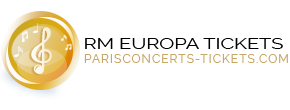
 EN
EN DE
DE IT
IT FR
FR ES
ES RU
RU JP
JP RO
RO
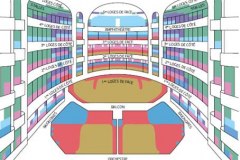 Seating plan
Seating plan 

